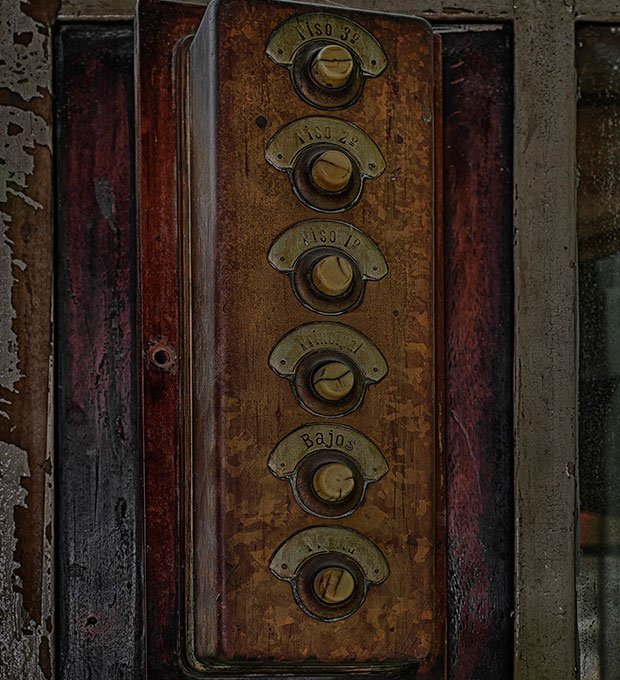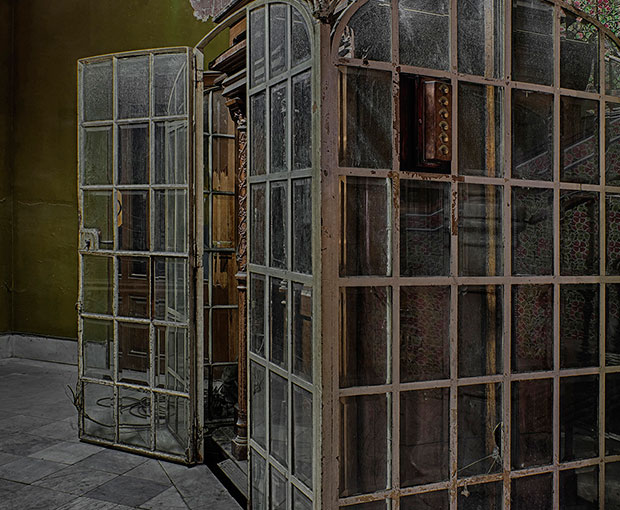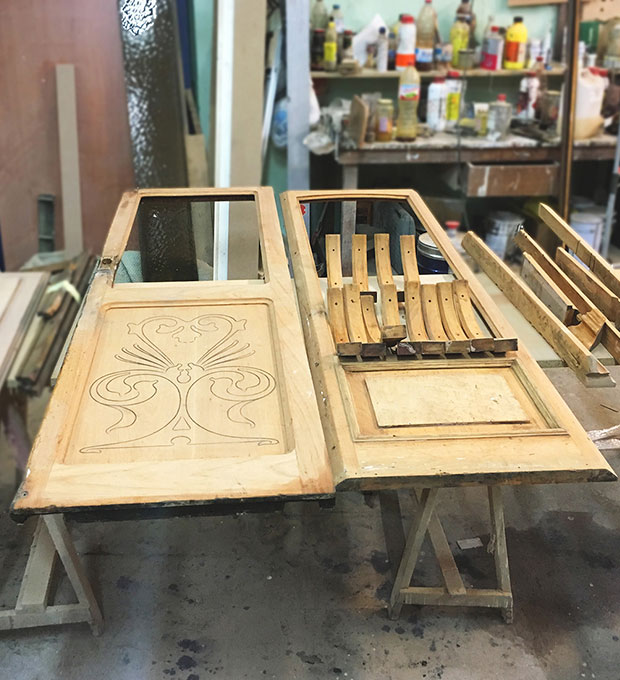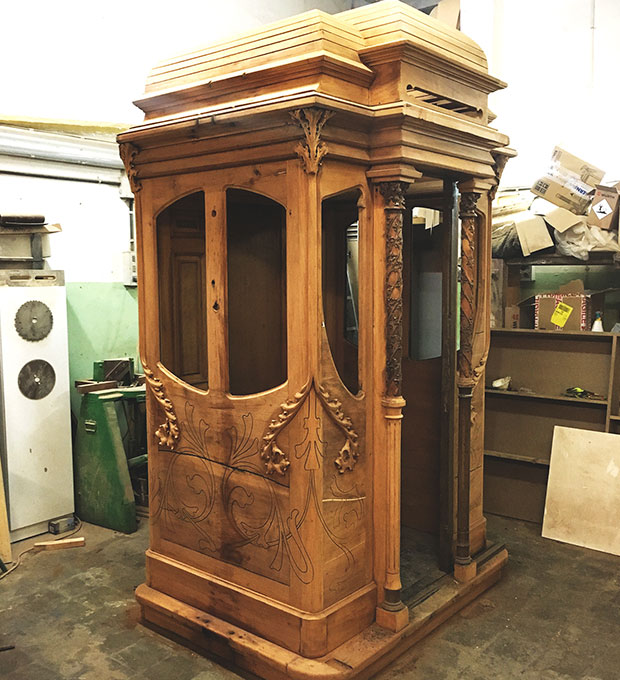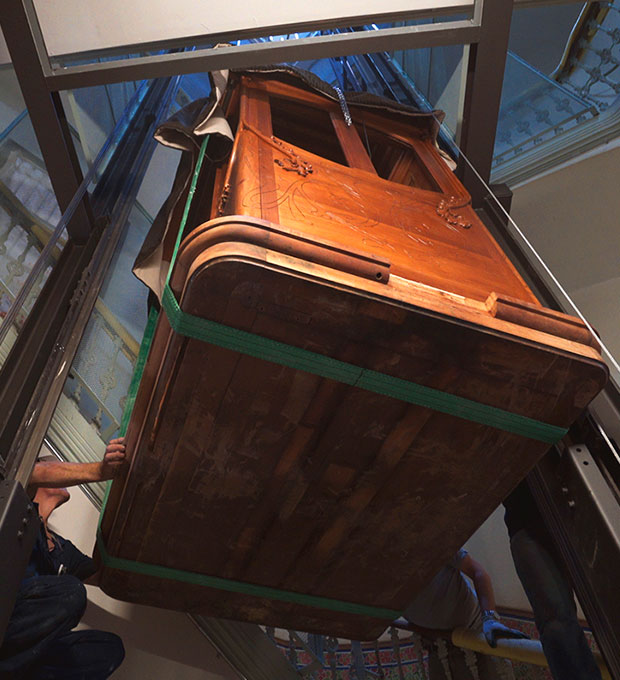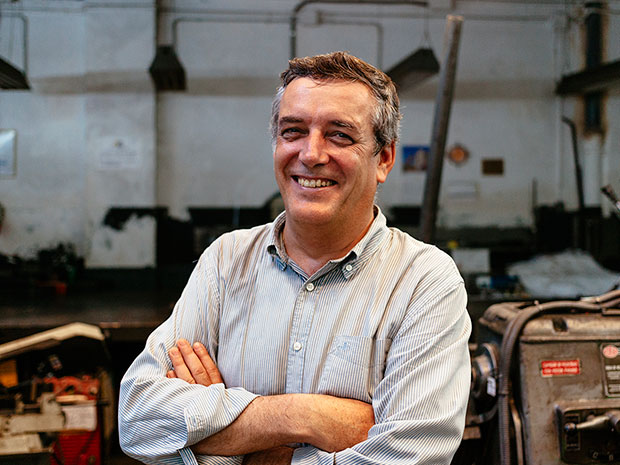The lift in Casa Burés was installed by the Enrique Cardellach lift company in 1905 and was one of the first lifts in Barcelona. Historians believe that the first lift in the city was installed in the Columbus Monument, which was built for the 1888 Barcelona Universal Exposition by Joseph Richmond and Co. But it was not until 1897 that the first electric lift was installed in a residential building at Passeig de Sant Joan 84.
This wave of lift installations in the new buildings of the Eixample was very closely linked to the need to gain height to build apartment buildings and the arrival of electricity. Lifts were a symbol of power and prestige, despite the fact that the finest residences were located on the lower floors. The building owners generally lived on those floors, as in the case of the first owner of Casa Burés, whose home on the Residences floor had an independent staircase in the carriage entrance.

